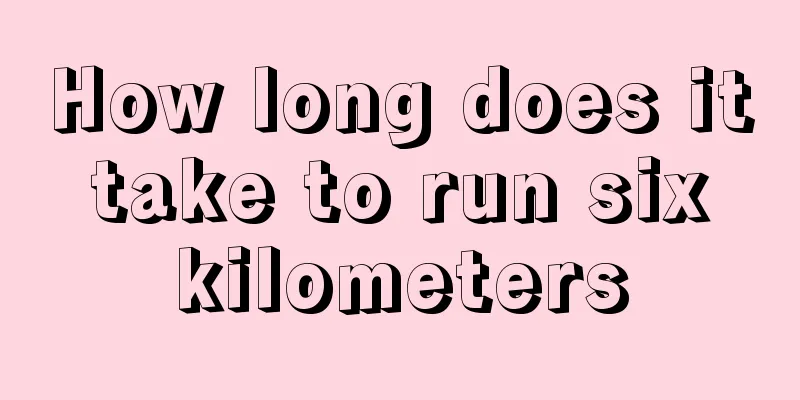What happens to the diaphragm during inhalation?

|
Breathing is a very critical part of the human body. If the human body stops breathing, it will easily lead to life-threatening. When the human body inhales, the tongue and diaphragm will undergo some changes. When the human body inhales, air pressure will be generated in the chest cavity and lungs. When inhaling, it will easily lead to a reduction in chest capacity, causing the diaphragm to contract, and the air pressure in the lungs will decrease. What happens to the diaphragm during inhalation? Respiratory movement is caused by the contraction and relaxation of respiratory muscles, including two processes: when inhaling, the diaphragm and intercostal muscles contract, causing the front-to-back, left-to-right, and upper-lower diameters of the chest cavity to increase, the volume of the thoracic cavity to expand, and the lungs to expand accordingly, causing the air pressure in the lungs to be less than the external atmospheric pressure, and the external gas to enter the lungs, forming an active inhalation movement; when exhaling, when the diaphragm and external intercostal muscles relax, the ribs and sternum return to their original positions due to their own gravity and elasticity, resulting in the reduction of the thoracic cavity, the volume of the thoracic cavity to reduce, and the lungs to shrink accordingly, causing the air pressure in the lungs to be greater than the external air pressure, and the gas in the lungs to be discharged from the lungs, forming a passive exhalation movement. Therefore, when inhaling, the diaphragm contracts, the volume of the thoracic cavity expands, and the air pressure in the lungs decreases. Diaphragm action The diaphragm is the main respiratory muscle. When it contracts, the dome of the diaphragm descends and the volume of the chest cavity expands to assist inhalation. When it relaxes, the dome of the diaphragm rises back to its original position and the volume of the chest cavity decreases to assist in exhalation. As the diaphragm moves up and down, the mixing of the Hunyuan Qi in various parts is also promoted. When the diaphragm descends, the Qi of the heart and lungs can descend to the Hunyuanqiao, or even to the Mingmen. When exhaling, the kidney Qi can be led to rise, allowing the Qi of the heart, lungs, and kidney to mix. In addition, it can also mix the Qi in the chest (Qi of the sky) and the Qi in the abdomen (Qi of the earth), so that the Hunyuan Qi that fills the five internal organs can be connected into one and gathered at the Hunyuan Acupoint. At the same time, it also drives the mixing and transformation between the Hunyuan Qi of the internal organs and the Hunyuan Qi of the body. From the perspective of traditional Chinese medicine, the function of the diaphragm does not conflict with what has been stated above. Traditional Chinese medicine believes that the dynamic balance of yin and yang, water and fire, and essence and blood is an important condition for a person's physiological state. The heart is located at the top, its nature is yang and belongs to fire; the kidney is located at the bottom, its nature is yin and belongs to water. From the theory of the rise and fall of Yin and Yang, water and fire, for those at the bottom, rising is the order, and for those at the top, descending is harmony. In the Suwen Liuweizhi Dalun, it is said that "after rising, the descending is the sky; after descending, the ascending is the earth. "When the air descends, it flows to the ground; when the air on the ground rises, it rises to the sky." This is to explain the rise and fall of yin and yang, water and fire from the perspective of the universe. In a normal physiological state, as a person breathes, the diaphragm moves up and down, and the yang in the heart descends to the kidneys, which can warm and nourish the kidney yang; the yin in the kidneys grows up to the heart, which can nourish the heart yin. The heart fire descends and the kidney water rises, communicating and coordinating with each other. This relationship is called "water and fire are in harmony" and "the heart and kidney are in communication". Imbalance of yin and yang in the heart or kidney itself can lead to disruption of this relationship, resulting in corresponding symptoms. If the heart fire is too high and cannot communicate with the kidney, or if the kidney water is insufficient and cannot nourish the heart yin, then the physiological functions between the heart and kidney will become uncoordinated and a series of pathological manifestations will appear, which is called "heart-kidney disharmony." There will be symptoms such as palpitations, dizziness, irritability, soreness of waist and knees with insomnia as the main symptom, or men will have nocturnal emissions and women will have sexual intercourse, which are mostly due to "disharmony between the heart and kidneys". |
<<: Why does a sore throat suddenly occur without any warning?
>>: What does the fetal position in the right occipital position mean
Recommend
Can I drink ginger soup if I have constipation
Ginger soup is a very common drink. This kind of ...
People who are prone to nasopharyngeal cancer
Nasopharyngeal cancer is very harmful to the huma...
Is there any relationship between cervical spondylosis and heart
Cervical spondylosis is a common disease among mi...
What causes cervical spondylosis?
I believe that most of my friends are aware of ce...
How to diagnose liver cancer in its early stages? Analysis of markers for early diagnosis of liver cancer
Experts told reporters that an ideal liver cancer...
Gallbladder cancer causes severe pain as the main symptom
Gallbladder cancer is a common cancer in the gall...
How should brain nerves be repaired?
Once the brain nerves are damaged, there is basic...
The fastest way to treat acne
Adolescence is the happiest stage of a person'...
We must pay attention to the prevention of prostate cancer in a timely manner
Prostate cancer, as a common tumor disease, can c...
What are the clinical manifestations of retinoblastoma
According to clinical data, retinoblastoma has a ...
Can you eat bitter grapefruit?
People always feel that grapefruit tastes bitter,...
What are the effects of Quanjian malt extract
Quanjian malt extract is considered by many peopl...
How to self-diagnose breast cancer?
In recent years, breast cancer has gradually rise...
Is glutamyl transferase 120 a sign of liver cancer? Introducing several diagnostic methods for liver cancer
Glutamyl transferase 120 cannot be diagnosed as l...
What are the new treatments for advanced lung cancer? Which patients with advanced lung cancer have a better prognosis
Lung cancer, also known as primary bronchial canc...









